2018 Annual Report

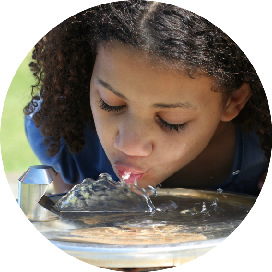
The Agency for Toxic Substances and Disease Registry (ATSDR) works to protect the health of the nation from natural and manufactured hazardous substances in the environment. ATSDR staff are national experts in working with communities and tribes to protect human health and investigate the relationships between exposures to hazardous substances and adverse health effects. ATSDR responds to requests from federal, state, local governments, and community members to help identify environmental hazards, recommend actions to reduce exposures, and educate the public on how to prevent harmful exposures.
With staff headquartered in Atlanta, as well as regional offices across the country, ATSDR is available 24/7 to respond to local concerns and protect the nation’s health during environmental emergencies.
A letter from the Administrator
As director of the U.S. Agency for Toxic Substances and Disease Registry (ATSDR) and on behalf of our 200+ employees, I’d like to welcome you to our 2018 Annual Report. In 1980, Congress created the Agency for Toxic Substances and Disease Registry (ATSDR) to implement the health-related sections of laws that protect the public from hazardous wastes and environmental spills of hazardous substances. ATSDR fulfills its mandate from Congress by responding to environmental health emergencies; investigating emerging environmental health threats; conducting research on the health impacts of hazardous waste sites; and building capabilities of and providing actionable guidance to state and local health partners.
In 2018, we served over 1 million U.S. residents by evaluating chemical exposures in their communities. We also provided them with information and guidance on how to protect themselves from potentially harmful health effects of these exposures. We responded to environmental health emergencies and conducted groundbreaking research on the health effects of many potentially harmful substances.
Patrick Breysse, PhD, CIH
Director
National Center for Environmental Health
Agency for Toxic Substances and Disease Registry
Conducted more than 100 investigations in communities across the country to assess the health risks to nearly 1 million people potentially exposed to harmful substances.
Responded to more than 600 community, state, and federal requests to investigate potential health risks.
Informed more than 34,000 health professionals about ways to diagnose and treat conditions related to hazardous exposures.
Worked in approximately 40 communities across the nation to examine the effects of exposure to per- and polyfluoroalkyl substances (PFAS), which are a large group of manmade chemicals.
Published 16 Toxicological Profiles (or tox profiles) — comprehensive evaluations of toxic substances that are hazardous to human health.
Provided funding to 25 states to evaluate toxic chemical exposures through the ATSDR Partnership to Promote Localized Efforts to Reduce Environmental Exposure (APPLETREE) Cooperative Agreement Program
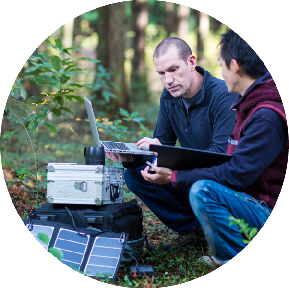
ATSDR has a complex mission
Hundreds of thousands of potentially harmful environmental hazards put public health at risk. As you can imagine, protecting people from the adverse health effects of these environmental hazards can be a daunting and complex job. It requires a team of highly skilled scientists from all disciplines, emergency response personnel, administrative and support staff to carry out this important and challenging mission successfully.
ATSDR is one of the few federal agencies to work directly with concerned citizens to address environmental hazards in communities. At the same time, it plays a pivotal role in advancing the science of understanding how environmental hazards can harm people’s health. Many ATSDR scientists and researchers are noted for their contributions to the study of these hazards. As an example, ATSDR frequently publishes Toxicological Profiles for chemicals that help lead to a better understanding of the health hazards of a given substance. These “Tox Profiles” have become the definitive reference documents for health professionals in the field.
The Agency for Toxic Substances and Disease Registry (ATSDR), based in Atlanta, Georgia, is a federal public health agency of the U.S. Department of Health and Human Services. ATSDR protects communities from harmful health effects related to exposure to natural and man-made hazardous substances. We do this by responding to environmental health emergencies; investigating emerging environmental health threats; conducting research on the health impacts of hazardous waste sites; and building capabilities of and providing actionable guidance to state and local health partners.

Applying cutting-edge environmental science
Every day, ATSDR scientists work to strengthen the application of toxicological science to inform public health actions. They contend with new contaminants and conduct health studies and surveillance, such as the ongoing cancer incidence study at Camp Lejeune, North Carolina, and surveillance of asbestos disease in Libby, Montana, to understand the health effects of environmental exposures to human health.
In 2018, ATSDR published 16 toxicological profiles for substances that are hazardous to human health. Toxicological Profiles (Tox Profiles) are a unique compilation of toxicological information on a given hazardous substance. Each peer-reviewed Tox Profile reflects a comprehensive and extensive evaluation, summary, and interpretation of available toxicological and epidemiological information on a substance.
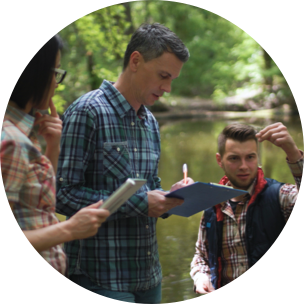
Acting against toxic threats
ATSDR collaborates with local, tribal, state, territorial and federal agencies to address environmental concerns in communities across the country. In 2018, we responded to over 600 community, state, and federal requests to investigate potential health risks.
ATSDR experts also respond to toxic chemical exposures, hazardous leaks and spills, environmentally related poisonings, natural disasters, and terrorist acts.
For example, ATSDR’s Emergency Response Program provided immediate response when perchloroethylene (PCE) vapors were seeping into a public school in Vermont.

Identifying harmful exposures
When called into a community, ATSDR investigates environmental hazards that might affect a few persons or thousands of people. ATSDR staff gather information and analyze the data in state-of-the-art laboratories. ATSDR investigations help resolve health threats and determine whether people have been exposed to harmful levels of contaminants. In many cases, ATSDR’s recommendations lead to swift action to alleviate hazards.
For example, an ATSDR investigation evaluated trichloroethylene (TCE) contamination in the soil and groundwater near residential neighborhoods in Toronto, Ohio, and determined that people were being exposed to vapors seeping into their homes. Based on ATSDR’s recommendations, the EPA’s Emergency Response Branch jumped into action and immediately installed vapor abatement systems in homes and structures where TCE vapors were found.

Sharing knowledge
ATSDR staff provide critical guidance to enhance prevention efforts and investigations. Scientists at ATSDR include epidemiologists, environmental toxicologists, geospatial analysts, medical officers and statisticians among others. They work with public health assessors, consultants, and investigators in the field to provide technical expertise and site-specific support.
In 2018, ATSDR launched Land Reuse pilot programs in six communities: Atlanta, GA; Orlando, FL; Jacksonville, FL; Navajo Nation, AZ; Howardville, MO; and K.I. Sawyer, MI. The pilot programs help guide these communities to engage in land reuse and redevelopment projects to reduce environmental exposures and improve community health.

Safeguarding the nation’s health
ATSDR works to protect people and save lives. To accomplish this, ATSDR collaborates with communities and health agencies to evaluate exposure concerns and identify risk factors. When necessary, ATSDR develops prevention strategies and supports adoption of these strategies by other federal, state, and local agencies to prevent and reduce exposures to health threats.
For example, when PFAS was found in the water supply in Parchment, Kalamazoo County, Michigan, ATSDR worked to help eliminate the exposure. Nearly 4000 people were protected from PFAS exposure as a result.

Community-centered prevention
ATSDR helps communities prevent exposures to potentially hazardous substances.
For example, ATSDR and its partners in Ohio combined efforts to protect Madison Township residents and members of the Madison Early Childhood Learning Center from the harmful effects of TCE that was in the drinking water. These efforts will help to prevent cancer in residents and potential health effects in pregnant women and their unborn babies.
ATSDR is committed to protecting U.S. residents from the health effects of exposure to toxic substances in the environment. Here are some examples from 2018:
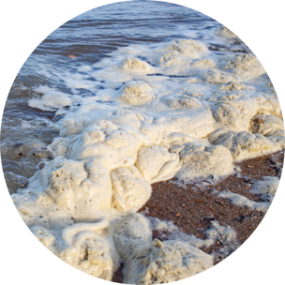
ATSDR takes on leadership role in studying health effects of PFAS.
Exposure to PFAS is a growing public health concern. PFAS are manufactured chemicals that have been used in industry and consumer products worldwide since the 1950s. They have been used in non-stick cookware, water-repellent clothing, stain resistant fabrics and carpets, some cosmetics, some firefighting foams, and products that resist grease, water, and oil.
ATSDR and its state health partners are investigating exposure to and possible health effects associated with PFAS in multiple communities across the United States. ATSDR is also conducting exposure assessments as authorized in the 2018 National Defense Authorization Act to assess PFAS exposures in communities near current or former military bases known to have had PFAS contamination in their drinking water.

ATSDR making strides in the fight against ALS.
As of 2018, ATSDR’s National ALS Registry has identified over 16,000 ALS patients, as well as informed more than 1,000 patients about the disease. It also has connected over 1,000 patients with 45 clinical trials and epidemiological studies. The Registry identifies significant areas that need investigation. Then, the Registry funds crucial, groundbreaking research in these areas. The Registry funds and collaborates with some of the world’s leading research institutions. Since 2010, ATSDR has funded 13 Registry research studies in the U.S. and abroad and will continue to fund more studies. Researchers from all around the world are able to share their findings. This kind of collaboration is new and the key for success.
The Registry also successfully launched the National ALS Biorepository. As part of this effort, more than 500 patients have donated specimens to the Biorepository to help researchers better understand ALS genetics, biomarkers, and causes. Information gleaned from these and future studies will help better understand the risk factors and causes of ALS.

GRASP: Mapping the future of environmental health
The ATSDR GRASP program applies geographic and geospatial information science to public health research and practice. 2018 marked a year of evolution and growth as GRASP met a growing demand for geospatial science, technology, analysis, and visualization support at ATSDR, the Centers for Disease Control and Prevention (CDC) and in the broader public health community. GRASP used its expertise with geographical data to enable ATSDR scientists and communities to better understand interrelated environmental, sociodemographic, and behavioral issues resulting from chemical exposure at hazardous waste sites across the United States.
In 2018, GRASP supported ATSDR site investigations at 40 different locations across the United States. The work ranged from conducting introductory demographic maps and population estimation, data screening and analysis, and custom cartographic output. GRASP prepared an interactive display for buildings of priority concern for vapor intrusion risk at the U.S. Marine Corps Base Camp Lejeune site to effectively share results with partners at the vapor intrusion meeting in November, 2018. Following the devastating and costly Hurricane Harvey in 2017, GRASP provided hurricane recovery support work throughout 2018 to CDC by estimating flooding severity and duration using search-constrained inverse distance weight modeling.

Helping to ensure safe places for young children to learn
ATSDR’s Choose Safe Places for Early Care and Education (CSPECE) protects the health of children where they learn and play. CSPECE programs at the state level reduce children’s risks of being exposed to dangerous chemicals during their time in early care and education. ATSDR created CSPECE to encourage thoughtful consideration about where to locate early care and education facilities.
In 2018, state grantees made significant strides to protect children in early care and education from exposure to hazardous substances at a state level:
- Grantees formed 150+ local partnerships with licensing, environmental, zoning, childcare, health, non-profit, academic, economic, and business partners for successful program design.
- Grantees worked toward developing sustainable programs by gaining buy-in from local partners, creating user-friendly tools and resources, and starting work to help partners include CSPECE in their procedures.
- Grantees enhanced existing programs to better protect children through program evaluation and improvement. They also added novel activities, such as an acknowledgement program for providers to encourage participation.

soilSHOP: Screening, Health Outreach and Partnership
SoilSHOPs teach communities about the hazards of lead exposure and help them discover lead contaminants in their soil. Children remain at risk for lead exposures, particularly children who live in urban environments and areas that had lead-based industries. The nationwide rise in popularity of community gardening also means gardeners and their families might be at increased risk for exposures to lead-contaminated soils. At soilSHOPs, community members receive free soil-lead screenings and individualized health education to raise their awareness about lead in soil. These events reduce exposures to lead, and encourage safe gardening practices.
In 2018, ATSDR provided direct support and education to communities:
- Partnered and participated in soilSHOP events to provide health education expertise on lead exposure and safe gardening practices. ATSDR regional staff participated in 13 soilSHOP events in nine states (California, Georgia, Idaho, Kansas, New York, Pennsylvania, Rhode Island, Virginia, and Washington).
- Collaborated with the Environmental Protection Agency (EPA) to help them adopt the soilSHOP event model as an effective way to bring soil lead education to communities. ATSDR and EPA, along with other state, local, and community partners, successfully held soilSHOP events in Virginia, Idaho, New York, Rhode Island, and Washington. Read more about these events in “Protecting Children from Lead Exposurespdf iconexternal icon,” which summarizes EPA’s activities to reduce lead exposure in children.

ATSDR is unique in that it works directly with communities to prevent harmful exposures. It also researches harmful substances to find out how they can affect human health. ATSDR publishes Toxicological profiles on harmful substances it researches. Toxicological Profiles (Tox Profiles) are a unique compilation of toxicological information on a given hazardous substance. Each peer-reviewed Tox Profile reflects a comprehensive and extensive evaluation, summary, and interpretation of available toxicological and epidemiological information on a substance.
During 2018, ATSDR prepared and released 16 Toxicological Profiles on the following substances including,
- N-nitrosodi-n-propylamine (Final)
- Dibromoethane (Final)
- Isophorone (Final)
- S,S,S-Tributyl Phosphorotrithioate (Tribufos) (Public Comment Draft)
- 2-Hexanone (Public Comment Draft)
- Bromomethane (Public Comment Draft)
- Bromodichloromethane (Public Comment Draft)
- Perfluoroalkyls (Public Comment Draft)
- Toluene Diisocyanate and Methylenediphenyl Diisocyanate (Final)
- 1,2-Dibromo-3-chloropropane (Final)
- Chlordane (Final)
- Dinitrocresols (Final)
- N-Nitrosodiphenylamine (Final)
- Bis(Chloromethyl) Ether (Final)
- 4,4′-Methylenebis(2-chloroaniline) (Final)
- Bis(2-Chloroethyl) Ether (Final)

ATSDR Emergency Response Teams are available 24 hours a day. Team members include toxicologists, doctors, and scientists who can help during an emergency involving hazardous substances in the environment.
When volatile chemicals (those that evaporate easily and form vapor in the air) get into soil and groundwater, they can enter and build up inside buildings. People inside the buildings can be exposed to these chemicals from breathing the air.
In 2018, ATSDR’s Emergency Response Program was notified about a perchloroethylene (PCE) vapor intrusion at a public school and several private homes in Burlington, Vermont. PCE is a manufactured chemical used for dry cleaning and metal degreasing. Exposure to very high concentrations of this chemical can cause dizziness, headaches, sleepiness, lack of coordination, confusion, nausea, unconsciousness, and even death. ATSDR supported an EPA investigation that determined PCE sources and evaluated the indoor air in several homes and the school. Working with EPA, ATSDR’s team reviewed and drafted an evaluation.
The ATSDR team determined that the very low levels of PCE detected in parts of the school were not a health threat, but recommended additional monitoring while school was in session. ATSDR indicated that the school could open on schedule for its fall session. However, it recommended that students and pregnant staff limit time spent in the school basement.
These kinds of rapid data analyses and support helped produce timely, concrete recommendations to protect the safety of students and staff.

In 2018, the Camp Lejeune study team released the “Morbidity Study” that
looked at whether there is a link between exposure to contaminated drinking water at Camp Lejeune and selected cancers or other diseases in former service men and women, their families, and civilian workers. Drinking water at Camp Lejeune was contaminated with volatile organic compounds (VOCs), including trichloroethylene (TCE), tetrachloroethylene (PCE), benzene, trans-1,2-dichloroethylene (DCE), and vinyl chloride.
This study looked at military personnel, their families, and civilian employees at Camp Lejeune who may have been exposed to contaminated drinking water and compared some specific health problems with military personnel and civilian employees at Camp Pendleton who were not exposed to the water. This study showed that contaminated drinking water at Camp Lejeune was linked to increased risk for bladder cancer, kidney cancer, and kidney disease; these results are consistent with results found in previous studies.
The results of this study add to the scientific literature on the risk of cancer and other diseases associated with TCE and PCE in drinking water. ATSDR will follow up on these findings in a cancer incidence study that will involve state cancer registries nationwide, as well as federal cancer registries.

ATSDR and its collaborating partners—the University of New Mexico, the Indian Health Service, and the Navajo Nation Department of Health— conducted a study following infants to evaluate the potential association between environmental contaminants (such as uranium and other heavy metal exposures) and developmental delays at birth and beyond. They recruited more than 800 Navajo mothers, assessed their uranium exposure, and then followed their children after birth to evaluate any birth defects or developmental delays. The study results also help to reinforce to Navajo communities the importance of seeking prenatal care during pregnancy.

ATSDR continues the Biomonitoring of Great Lakes Populations (BGLP) program. The BGLP program consists of three phases of cross-sectional studies (looking at exposure during a specific point in time) carried out collaboratively with state health departments in Michigan, Minnesota, New York, and Wisconsin. The first two phases of studies (BGLP-I and BGLP-II) were completed in 2015 and 2018, respectively, while the third phase is currently ongoing in Milwaukee, WI.
The state–led programs targeted susceptible adult populations living in designated areas of contamination, including shoreline anglers, licensed anglers, American Indians, and Burmese refugees and immigrants. A questionnaire collected information including participant demographics, lifestyle factors, and dietary intake, with a focus on locally caught fish consumption.
The biomonitoring results enabled public health and tribal officials to work with their communities to create culturally appropriate educational materials and advisory messages on the risks and benefits of eating some locally caught fish.
Lastly, the biomonitoring program demonstrates environmental health protection at work by helping guide public health actions to reduce chemical exposures in these vulnerable Great Lakes populations.

The Computational Toxicology Lab (CompTox) continued to innovate the development of computational toxicology tools. CompTox provides an avenue to increase ATSDR’s ability to use computer-based methods to help rapidly screen chemicals, to support the risk assessment process, to reduce the number of chemicals to be tested experimentally, and to rationalize their choice. With these advancements, ATSDR maintains a role as a recognized member of the scientific collective of federal agencies and international groups that are building the scientific future of chemical risk assessment. CompTox and its collaborating partners have presented and published their projects findings. CompTox pharmacokinetic modeling efforts supported international efforts, including helping formulate the current European Food Safety Authority’s assessment of dioxin in food and feed.

ATSDR provides community members, health educators, healthcare providers, and other health professionals with community environmental health education products to increase environmental health literacy. These products include information about specific types of exposures to hazardous substances, exposure routes and pathways, health effects, treatment options, and how to prevent or minimize exposures to hazardous substances in the environment.
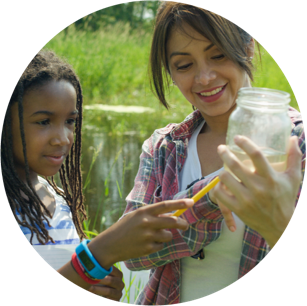
This year marks the 20th anniversary of the Pediatric Environmental Health Specialty Units (PEHSU). PEHSU is a national network of clinical environmental health specialists that work with health care professionals, parents, schools, community groups, government officials, and policy makers to provide medical advice on exposure to hazardous substances in the environment impacting reproductive and child health outcomes.
The basic services of the PEHSU program, supported and led by ATSDR, are:
- Education of health professionals and communities;
- Consultation to health professionals and communities;
- Referral to appropriate facilities for evaluation and treatment.
Most healthcare professionals do not receive adequate training to prevent, recognize, manage, and treat environmentally-related conditions in children and pregnant women. Which makes the work PEHSU does that much more vital— because children from their earliest stages of development through puberty are vulnerable to environmental toxins, such as lead, mold, pesticides, air pollution, and many other contaminants.
An important component of the work of the PEHSU program is outreach, to both health professionals and the general public. Since the beginning stages of PEHSU in 1998, over 353,000 community members and more than 470,000 health professionals received educational consultations from the PEHSU. Over the years, PEHSU has successfully tackled cases in lead poisoning, fungus, pesticides, mercury poisoning, mold, and low-level exposures to air and water pollution.
At the heart of all of ATSDR’s work is state-of-the-art science. In 2018, ATSDR Scientists made key contributions to the scientific literature. Here is a small sampling of some of the many scientific articles authored or co-authored by ATSDR staff in 2018:
“Incorporation of fetal and child PFOA dosimetry in the derivation of health-based toxicity values”, published in the journal Environmental International
“Medical Response to a Vinyl Chloride Release from a Train Derailment: New Jersey, 2012”, published in the journal Disaster Medicine and Public Health Preparedness
“Liver Disease in a Residential Cohort with Elevated Polychlorinated Biphenyl Exposures” published in the journal Toxicological Sciences
“Biomonitoring programs in Michigan, Minnesota and New York to assess human exposure to Great Lakes Contaminants” published in the International Journal of Hygiene and Environmental Health
To learn more about how ATSDR protects people from environmental hazards, visit the ATSDR website at: https://www.atsdr.cdc.gov/